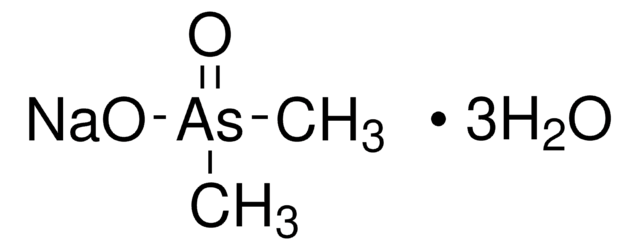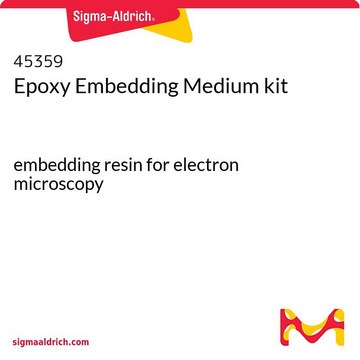201030
Osmium tetroxide
ReagentPlus®, 99.8%
Synonyme(s) :
Osmium(VIII)-oxide, ‘Osmic acid’
About This Item
Produits recommandés
Qualité
reagent
Densité de vapeur
8.8 (vs air)
Pression de vapeur
7 mmHg ( 20 °C)
Gamme de produits
ReagentPlus®
Essai
99.8%
Forme
crystalline
powder
Pertinence de la réaction
reagent type: oxidant
pb
130 °C (lit.)
Pf
39.5-41 °C (lit.)
Température de stockage
2-8°C
Chaîne SMILES
O=[Os](=O)(=O)=O
InChI
1S/4O.Os
Clé InChI
VUVGYHUDAICLFK-UHFFFAOYSA-N
Vous recherchez des produits similaires ? Visite Guide de comparaison des produits
Description générale
Application
- To promote the lactonization of alkenols to lactones.
- To mediate the selective oxidative cleavage of olefins by oxone to form the corresponding ketones or carboxylic acids.
- Dihydroxylation of mono-trans-di, and trisubstituted olefins to form 1,2-diols with high enantioselectivity in the presence of chiral amines.
Informations légales
Mention d'avertissement
Danger
Mentions de danger
Classification des risques
Acute Tox. 1 Dermal - Acute Tox. 2 Inhalation - Acute Tox. 2 Oral - Eye Dam. 1 - Skin Corr. 1B
Code de la classe de stockage
6.1A - Combustible acute toxic Cat. 1 and 2 / very toxic hazardous materials
Classe de danger pour l'eau (WGK)
WGK 1
Point d'éclair (°F)
Not applicable
Point d'éclair (°C)
Not applicable
Faites votre choix parmi les versions les plus récentes :
Déjà en possession de ce produit ?
Retrouvez la documentation relative aux produits que vous avez récemment achetés dans la Bibliothèque de documents.
Les clients ont également consulté
Notre équipe de scientifiques dispose d'une expérience dans tous les secteurs de la recherche, notamment en sciences de la vie, science des matériaux, synthèse chimique, chromatographie, analyse et dans de nombreux autres domaines..
Contacter notre Service technique






